Friday, 9 April 2010
The Medium and the Message
One thing that religions, and especially the Catholic Church, have tended to be good at in previous centuries is communication. Whether through printing or music or art or architecture or just good stories, the Church has often been admired (or feared) for her ability to get her message across. However, curiously, in the modern age – the age of communication! – this has been proven to be less and less the case. At the very least this has seen the Church’s message become more irrelevant or just invisible to many people. In the worst cases, as we have seen recently, it has shown the Church to be unable or unwilling to say what people need to hear in a language that they will accept.
I am not going to offer any communications advice to Church authorities in the present crisis beyond recommending honesty and humility. Instead this month I do want to share some of our own recent experiences of communicating some part of the Church’s message here in South Africa.
The main liberal secular paper here is called the ‘Mail & Guardian’. A glance at its politics and its typography will show that it has much more in common with the British ‘Guardian’ than the ‘Daily Mail’. Every Easter they have a special supplement known as the God Issue, since for at least this one weekend they run stories about faith which are not based around scandal (which after all is 1 weekend more than the papers in the UK!). After last year’s God Issue we suggested, ever so gently, that they might benefit from the involvement of people who actually knew something about religion. To our surprise they accepted our challenge and invited (Fr) Anthony Egan, one of the Jesuits on my team, on to the editorial board.
Thus, the Jesuit Institute was able not only to contribute some very interesting articles (about Church engagement in politics or about ancestral spirits in the Philippines) but also shape the way in which faith could be presented in a reasonable way to a broadly non-believing rational readership. I don’t imagine it converted anyone – and that was not our intention – but at least it meant that some South Africans might have paused over their hot cross buns and remembered that Easter for many people was still a religious festival. (Talking of which, the South African commitment to shopping or to eating proves to be unimpeded by religious sensitivities. I saw in one Northern Suburbs supermarket that they were selling ‘kosher hot cross buns’. I guess they were the ones that had not risen.)
The Easter services themselves – effectively a 3-act participatory drama – are a great act of communication. They do in part reach out beyond the usual church-goers since there are many hundreds more in church on Good Friday than on most Sundays (though they are only seeing the middle act of the play). But even for the regulars these services are important since they remind us of what lies at the heart of our faith and that those events in Jerusalem 2000 years ago – the death of a man but also his resurrection – are still part of our lives today. I had a great sense of that in the Good Friday afternoon service in Soweto where there were well over 2,000 people filing in devoted silence through the church to venerate the cross – old men and women who seemed to bear on their faces the wounds of the Struggle, and young children for whom the New South Africa was all they knew.
But we at the Jesuit Institute have been reaching beyond the walls of the churches and also using the airwaves to get our message across. The local Catholic radio station, Radio Veritas (“The Good News, for a change!”) had managed to obtain an FM license just for the period of Lent and so we offered to provide them with almost 30 hours of programming. Driven by our own passions and enthusiasms we delivered a range of material: a magazine programme about current affairs, a phone-in about ways of praying, a series of interviews with people in different professions talking about how they found God in their secular workplaces, and a series in which we explored what religious sub-text there might be in contemporary culture (from ‘Harry Potter’ to ‘The Godfather’). You may not be surprised to hear that I came into my own when talking about finding God in Broadway musicals (‘Oliver’ and ‘Les Mis’ were easy; ‘La Cage aux Folles’ a bit more challenging).
One series of programmes was tied to a set of lectures that the Jesuit Institute has traditionally offered during Lent. The subject that we took this year was how to find God in the face of suffering and our 4 lectures covered disasters, climate destruction, depression and death. (It’s not all jollity, you know). The honesty of the personal reflections had a huge impact not only on the people in the hall but on those listening at home, enhanced by the decision to illustrate each talk with extracts from a Requiem Mass (Britten, Verdi, Fauré and Mozart).
The Church needs to use to good effect these sophisticated forms of communication. And we can also cut through the technology and offer the opportunity for powerful communication in the simplest form possible – a conversation. One of the links I made last year was with the Business School of Georgetown, the enormous, influential and very wealthy Jesuit university in Washington DC. Members of their MBA class came over early in March to present some consulting work they had been doing for South African organisations. As part of that they met a lot of South African business people, and business students. They even had the traditional tour of Soweto but that is about as useful a way of getting to understand South Africa as a drive through the East End is for getting to know England. So we offered them a real encounter, or as they say in Zulu an ‘Indaba’.
The 50 very impressive, very well-educated, very well-heeled American graduate students sat down with 30 no less impressive but much less educated and certainly more poorly heeled young people from the Jesuit parish in Soweto. And apart from a few guiding questions we just left them to talk. 2 hours later both groups were reeling from the power of the encounter, of being able to have an honest conversation with someone who appeared at first to be so different and yet under the surface was so similar. They shared their dreams, their fears and their business ideas. And they even shared the true African experience of trying to have a conversation in a school hall while the deafening rain is pelting down on the tin roof. Gratifyingly, many of the American students described this simple conversation as the highlight of their visit.
Getting across a message of hope and possibility and new life can be done in the pulpit. But we have also been trying to communicate through radio and press and lectures and simple conversations. In fact almost any way that works apart from shouting at people.
Subscribe to:
Post Comments (Atom)


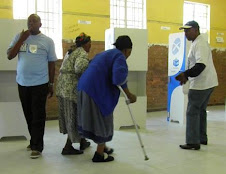













































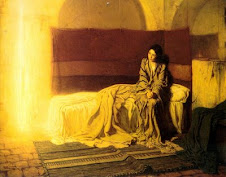













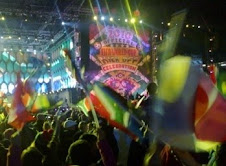













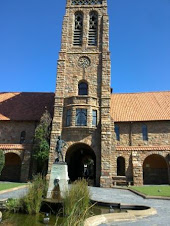











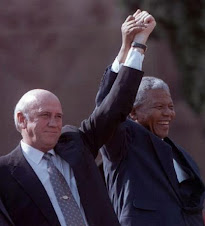.jpg)








No comments:
Post a Comment
Note: only a member of this blog may post a comment.